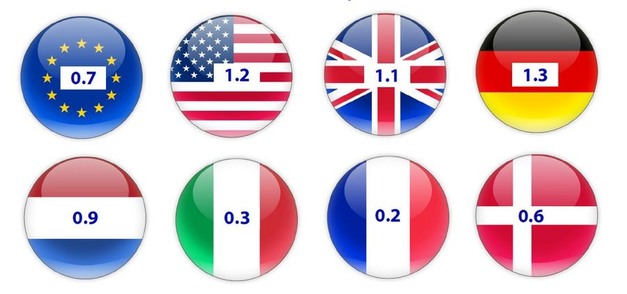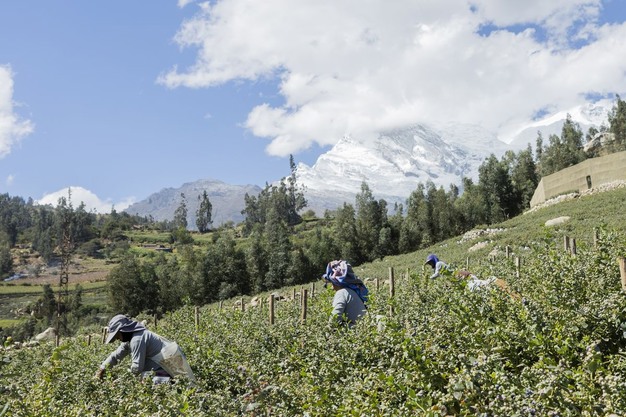Blueberries are the fastest growing berry category, both from a breeding and consumption perspective. "In blueberries, we're seeing a lot of breeding activity, resulting in better varieties," says Philip Symons with North Bay Produce. "While the same has been happening with other berries, the adaptation on blueberries seems to have been the fastest." The success in breeding has enabled new varieties to be grown all over the world, giving consumers access to great-tasting blueberries year-round.
Consumer friendly
Modern cultivated Blueberries originate from wild crops and until not too long ago, they weren't consumed in fresh format at all in many parts of the world. Wild blueberries are small, soft, and seedy and the majority end up in processing. With the development of cultivated varieties that contain higher sugar levels, larger berries and better flavor, they have become much more consumer friendly. Being the ultimate convenience food in combination with a superfood, consumption has grown exponentially over the years. The growth trend continues, both in established consuming countries as well as in areas where people have traditionally consumed less berries.
 © North Bay Produce
© North Bay Produce
Developed vs. emerging markets
In the U.K., the blueberry boom started in the mid 2000's and since then, consumption/capita has quadrupled. The U.K, together with Germany, Scandinavia and the smaller Benelux show the highest consumption/per capita levels in Europe and are some of the more developed markets. Blueberries are rapidly gaining popularity in southern European countries like Spain and Portugal where people traditionally consumed more strawberries and raspberries. According to research from Rabobank, average consumption/capita in the European Union is still far behind fresh blueberry consumption levels in the U.S., U.K. and Germany. This offers many opportunities for growth in the years to come. Even in a mature market like North America, growth/capita still continues. Emerging countries with a large population like China and India are only just starting to consume blueberries, so there is a lot of untapped potential still.
Overview of blueberry consumption/capita for select countries and regions © Raboresearch
© Raboresearch
Source: RaboResearch, 2025
North Bay is involved in growing and selling blueberries globally and follows the seasons. "We grow in North America, Latin America, Europe, Asia, and Africa with the objective to supply premium fruit to our sales markets in North America, Europe, and Asia year-round," commented Symons. While the company has a division in China, it is still developing. The Chinese prefer a superior product and import high-quality fruit from Peru and Chile. In India, blueberries are grown with partners under North Bay's premium RESERVE® label. "We sell them into the local, Indian market, which is still small, but growing. I expect India will follow China's path in the years to come and become an important market." Blueberries are a very new product in Africa still. "While we grow them in Morocco and South Africa, we're not selling them on the African continent yet," Symons said.
 © North Bay Produce
© North Bay Produce
Consumption keeps up with demand
Despite the growth in production around the globe, the category hasn't been faced with oversupply yet. "The increase in consumption has been tracking production as a result of the growth in existing and the development of new markets." The industry continues to lift the quality and coupled with the large consumption potential in some parts of the world, Symons expects the blueberry category to stay in balance for the foreseeable future. "I've been surprised with the strong demand in this category," he said.
Fruit Attraction
From Sept. 30 – October 2, North Bay Produce will be exhibiting at Fruit Attraction in Madrid. "From a global perspective, the shows in Madrid and Berlin are the biggest ones for us and we're attending with a large team." The timing of the Madrid show is ideal, not just from a weather point of view, but also because of the excellent timing for South American growers who are heading into peak blueberry season. Interested in meeting the team? Stop by stand 12C09 - Pavilion P12.
 © North Bay Produce
© North Bay Produce
 For more information:
For more information:
Philip Symons
North Bay Produce
[email protected]
www.northbayproduce.com
